Adding pictures of some of the experiments done in the cellar on the M^2 project to the pictures on the NASA site helps reinforce a connection between the lab work and the world NASA is describing below.
Copied from a NASA site
http://liftoff.msfc.nasa.gov/academy/universe/plasma_univ.html
The Plasma Universe
With pictures added by k1ugm
from our basement projects
Visit our web pages
SciTechAntiques.com remarks welcome
k1ugm@comcast.net or 781 245 2897
Also
See
Galileo's Telescope being made

More than 99 percent of matter in the Universe exists in the plasma state though nature rarely produces plasma on Earth's surface. Earth's electrically neutral environment is a rare exception.
Plasma processes are important factors in the behavior of stars, interstellar clouds, comets, the aurora, and even in our upper atmosphere. If scientists are to fully understand astrophysical and geophysical phenomena, they first must have a clear understanding of how matter behaves in the plasma state.
Years before the space era, ground-based radio wave observations revealed that a region of plasma exists above Earth's electrically neutral atmosphere. The ionosphere effectively reflects most radio waves back to Earth, and it is this process that led to the region's discovery.
 Plasma
begins to dominate Earth's environment in the
ionosphere. Ionospheric plasma is very thin and has distinctive layers
that differ in composition and density: the F1 layer (around 200 kilometers)
and F2 layer (around 300 to 400 kilometers). In the F2 layer, where the
plasma is most dense, there are rarely more than 1 million electron-ion
pairs in a cubic centimeter (cc), or thimbleful, of space; in comparison,
the neutral gas density for the same region is typically 1 billion particles
per cc. (Neutral gas density at Earth's surface is approximately 10 billion
billion particles per cc.) The plasma in these layers, consisting mainly of
electrons and atomic oxygen ions, is sustained by the ionizing action of
solar
ultraviolet radiation on the neutral atmospheric gas.
All ionospheric layers tend to merge at night.
Plasma
begins to dominate Earth's environment in the
ionosphere. Ionospheric plasma is very thin and has distinctive layers
that differ in composition and density: the F1 layer (around 200 kilometers)
and F2 layer (around 300 to 400 kilometers). In the F2 layer, where the
plasma is most dense, there are rarely more than 1 million electron-ion
pairs in a cubic centimeter (cc), or thimbleful, of space; in comparison,
the neutral gas density for the same region is typically 1 billion particles
per cc. (Neutral gas density at Earth's surface is approximately 10 billion
billion particles per cc.) The plasma in these layers, consisting mainly of
electrons and atomic oxygen ions, is sustained by the ionizing action of
solar
ultraviolet radiation on the neutral atmospheric gas.
All ionospheric layers tend to merge at night.
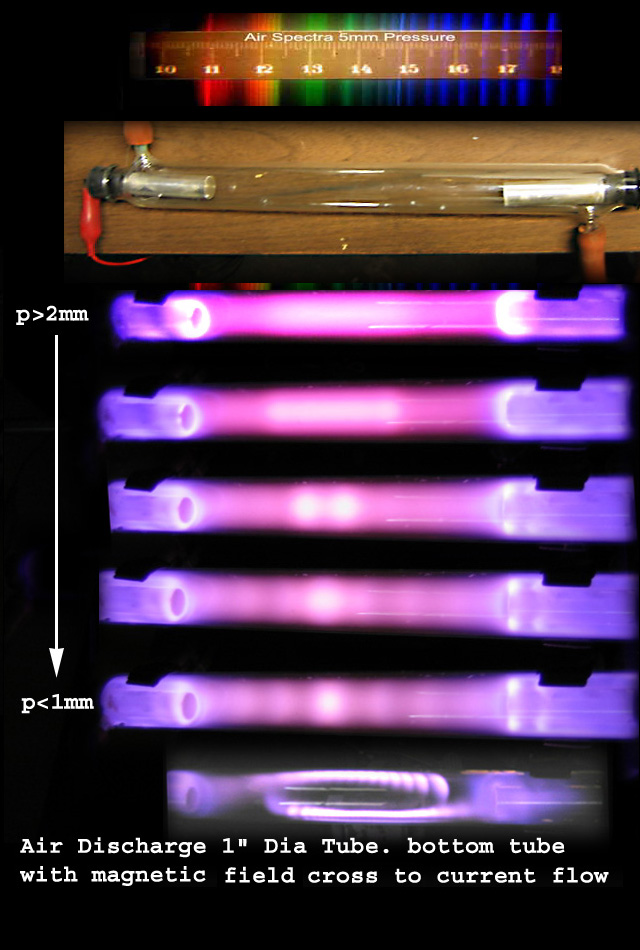
A great way showing the importance of interaction of magnetic fields
on plasmas. Note the separation of two arc columns in an a.c.
discharge. Plasmas in nature the northern & southern lights, plasma
jets shooting out of stars running into each other the action of
lightning and fire ball growth from atom bomb blasts all interact upon
themselves and each other
With the advent of artificial scientific satellites, researchers measuring the characteristics of the space environment near Earth discovered that Earth's ionized atmosphere extends much higher than was originally thought. Minute quantities of ionized atmosphere are found in Earth's magnetopause, which stretches between the lower and denser layer of the ionosphere (known as the E-layer) and the interplanetary boundary of Earth's magnetic field. On the side of Earth facing the Sun, the magnetopause extends upward from 140 to 64,000 kilometers. The behavior of the gas in this region is controlled by Earth's geomagnetic field, and the region is, therefore, referred to as the magnetosphere. The magnetopause trails away from the Sun on the night side of Earth, forming the magneto tail, which extends well beyond the orbit of the Moon (more than 384,000 kilometers), and forms a shape similar to a comet's tail.
Plasma is strongly influenced by both magnetic and electric forces, and in turn, plasma particles affect the distribution of magnetic and electric fields. Beyond the magnetopause, energetic plasma from the Sun (the solar wind) rushes past Earth at speeds ranging from 300 to 1,000 kilometers per second. While most of this solar wind is deflected around Earth, some of it penetrates the magnetosphere. The interaction between the solar wind and the magnetosphere plasma acts like an electric generator [called the magnetosphere Magneto Hydrodynamic (MHD) generator], creating electric fields deep inside the magnetopause. These fields create a general circulation of the plasma (a current system) and accelerate some electrons and ions to higher energies.
The visible manifestation of the high-energy electrons is seen in the auroras, the colorful Northern and Southern Lights that appear at 90 to 160 kilometers above Earth. The aurora colors are determined by the nature of the atoms struck by magnetosphere electrons and the energies of the collisions: the night sky is painted with the reds and greens of oxygen and hydrogen and the purples and pinks of nitrogen. A typical 3-hour aurora, covering a million square kilometers, discharges approximately 100 million kilowatt (kW) hours of electric energy into Earth's immediate environment. This is enough energy to power a medium-sized city of 250,000 for nearly 9 days and is roughly equivalent to 6 days of energy output by a large nuclearpower plant.
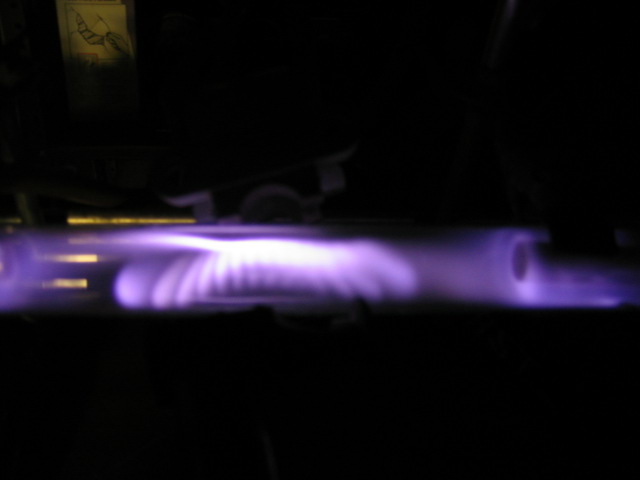
Above a low pressure air discharge generated in our basement crossed
with a magnetic field
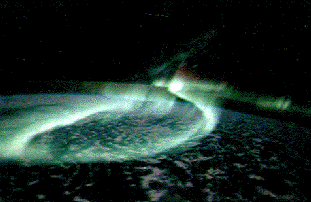
The northern lights
By characterizing the magnetic and plasma environments in Earth's neighborhood, scientists are able to recognize and understand plasma processes in the rest of the Universe. Already, auroras have been spotted on Jupiter, and the same types of phenomena appear to occur in the magnetospheres of Saturn and Uranus.
Many high-energy X-rays and gamma rays detected by astronomical observations come from magnetized plasmas near stars, galaxies, and other objects. A visual image of the Universe reveals only the superficial appearances, but plasma studies will reveal the invisible structure of space and the processes that may have formed the solar system from dust and plasma.
Updated December 5, 1995. Contacts
The Fourth State of Matter
There are three classic states of matter: solid, liquid, and gas;
however, plasma is considered by some scientists to be the fourth state
of matter. The plasma state is not related to blood plasma, the most
common usage of the word; rather, the term has been used in physics
since the 1920s to represent an ionized gas. Space plasma physics became
an important scientific discipline in the early 1950s with the discovery
of the Van Allen radiation belts. Lightning is commonly seen as a form
of plasma.
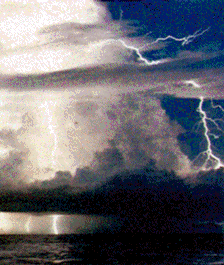
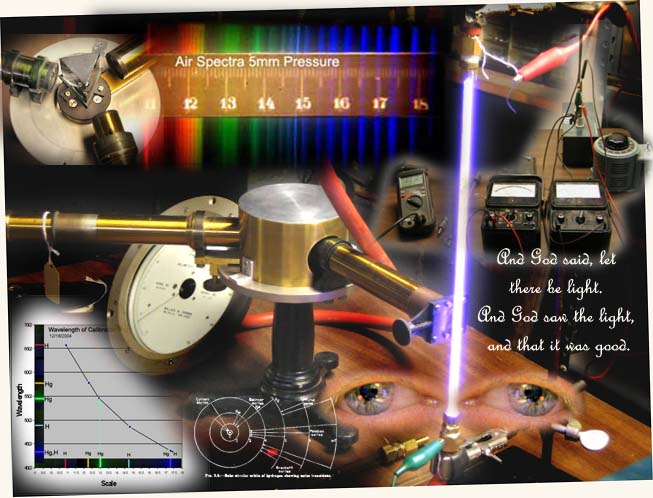 I
I
Adding picture of some of the experiments done in the cellar on the M^2 project to the pictures on the NASA site helps draw the connection with lab work and the world NASA is describing
Matter changes state as it is exposed to different physical conditions. Ice is a solid with hydrogen (H2) and oxygen (O) molecules arranged in regular patterns, but if the ice melts, the H2O enters a new state: liquid water. As the water molecules are warmed, they separate further to form steam, which is a gas. In these classic states, the positive charge of each atomic nucleus equals the total charge of all the electrons orbiting around it so that the net charge is zero. Each entire atom is electrically neutral.
When more heat is applied, the steam may be ionized: an electron will gain enough energy to escape its atom. This atom is left one electron short and now has a net positive charge; now it is called an ion. In a sufficiently heated gas, ionization happens many times, creating clouds of free electrons and ions; however, not all the atoms are necessarily ionized, and some may remain completely intact with no net charge. This ionized gas mixture, consisting of ions, electrons, and neutral atoms, is called plasma. A plasma must have sufficient numbers of charged particles so that the gas, as a whole, exhibits a collective response to electric and magnetic fields. Plasma density, therefore, refers to the density of the charged particles.
Although plasma includes electrons and ions and conducts electricity, it is macroscopically neutral: in measurable quantities, the number of electrons and ions are equal. The charged particles are affected by electric and magnetic fields applied to the plasma, and the motions of the particles in the plasma generate fields and electric currents from within. This complex set of interactions makes plasma a unique, fascinating, and complex state of matter.
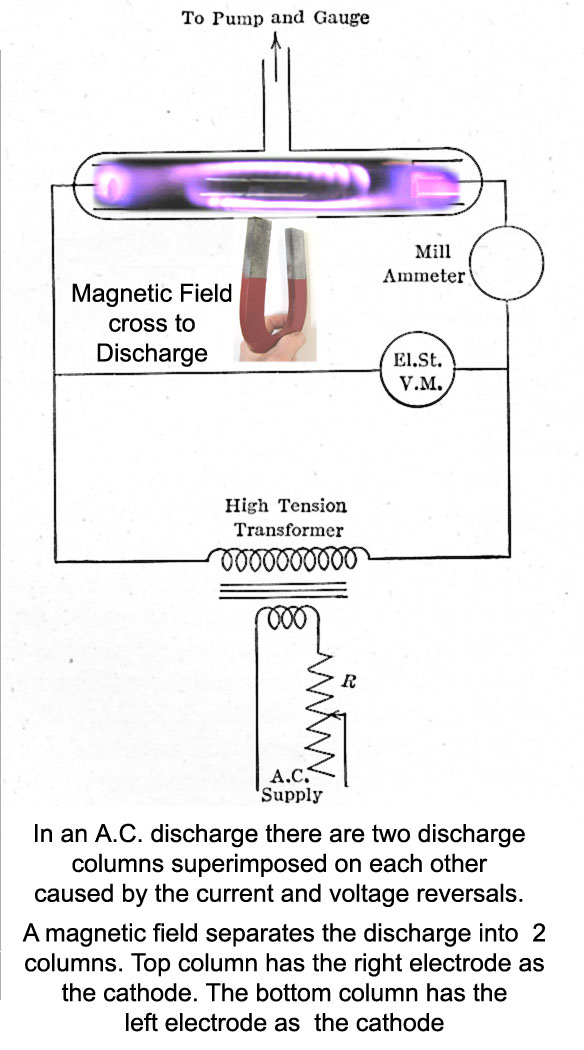
Below a small diameter 2 mm. low pressure gas discharge tube.
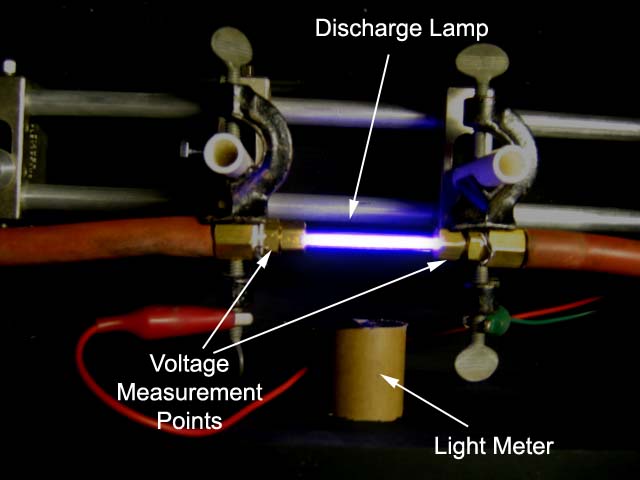
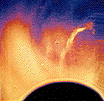
Plasma is found in both ordinary and exotic places. it produces both plasma and light. Lightning is a massive electrical discharge in the atmosphere that creates a jagged column of plasma. Part of a comet's streaming tail is plasma from gas ionized by sunlight and other unknown processes. The Sun is a 1.5-million-kilometer ball of plasma, heated by nuclear fusion (the picture is seen here in a Solar Max image of the corona, is a plasma heated by nuclear fusion).
Scientists study plasma for practical purposes. In an effort to harness fusion energy on Earth, physicists are studying devices that create and confine very hot plasmas in magnetic fields. In space, plasma processes are largely responsible for shielding Earth from cosmic radiation, and much of the Sun's influence on Earth occurs by energy transfer through the ionized layers of the upper atmosphere.
02/10/2008Updated Additional pictures by k1ugm for a H.S. Science Project 2/23/05